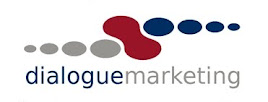This week I was pondering price objections, since we are all occasionally confronted with these; namely that our products or services are pricey in comparison to other competitors. Of course this necessitates painstakingly explaining the differences. So what is it that gets consumers to determine a "fair price"?
It's quite straightforward. Consider yourself, when you go shopping. Small, insignificant purchases, don't require you to make a value judgement. But larger purchases usually have you more involved; and what tends to happen is that you place a subjective "price" on the product or service.
If the price is below your "established price", you perceive the product to have value, and you need very little coaxing to purchase. Think of a new computer; you determine that a computer with the features you require is probably worth $500.00. If you walk into the store and find this at $350.00, you will feel that you found a "bargain", and vice versa.
The difference between reality and perception leads to a performance gap. This is the principle upon which a blowout sale works; pricing is so ridiculously low that transactions take place regardless of whether the customer has a definitive need or not. In other words the item is so cheap that the consumer doesn't think about the purchase, because his risk has been reduced. A performance gap can be either positive or negative.
A pricing benchmark is usually derived by loosely using a larger market participant as a benchmark. The problem is that this participant may be a market maker, in other words they have influenced the market to see things their way. It is logical to want to influence the market to the extent that your product offering is considered the standard by which everything is measured. But this may not suit your customer's reality; they just don't know it. Remember this maxim:
It's quite straightforward. Consider yourself, when you go shopping. Small, insignificant purchases, don't require you to make a value judgement. But larger purchases usually have you more involved; and what tends to happen is that you place a subjective "price" on the product or service.
If the price is below your "established price", you perceive the product to have value, and you need very little coaxing to purchase. Think of a new computer; you determine that a computer with the features you require is probably worth $500.00. If you walk into the store and find this at $350.00, you will feel that you found a "bargain", and vice versa.
The difference between reality and perception leads to a performance gap. This is the principle upon which a blowout sale works; pricing is so ridiculously low that transactions take place regardless of whether the customer has a definitive need or not. In other words the item is so cheap that the consumer doesn't think about the purchase, because his risk has been reduced. A performance gap can be either positive or negative.
A pricing benchmark is usually derived by loosely using a larger market participant as a benchmark. The problem is that this participant may be a market maker, in other words they have influenced the market to see things their way. It is logical to want to influence the market to the extent that your product offering is considered the standard by which everything is measured. But this may not suit your customer's reality; they just don't know it. Remember this maxim:
In the case of a pricing objection, this will mean probing the prospect for the objection, and overcoming that by demonstrating your product or service benefits. In other words, comparing apples with apples.
VALUE = PERCEIVED BENEFIT - PERCEIVED COST
In the earlier scenario this usually means focussing the prospects attention on his needs, and then highlighting the benefits of owning your product. This will usually get the prospect to stop measuring you relative to a competing product, and will justify your pricing.
Now, in a face-to-face sales environment, this is relatively easy to do, although seldom done properly. But what do you do when your prospect hasn't even displayed an interest in transacting yet?
You will recall our chat on Lead Nurturing and Closing A Sale, where we emphasised that it will invariably take more than one contact to secure a sale, and that this requires you to nurture your leads.
A large part of this nurturing process must focus on the benefits of using your product or service. Only through repeated emphasis, and guiding a prospect through a process of discovery designed to uncover needs, can you position yourself apart from your perceived competitors. And this positioning is achieved through the use of dialogue, in the form of closed probes, where you uncover a prospects needs and respond with appropriate satisfiers. All of this can be achieved automatically.
An alternative, instead of using a dynamic, prospect driven process, is to anticipate what many of the objections may be, and to provide a static solution on your website or blog, in the form of FAQ (Frequently Asked Questions).
Your ultimate objective is to create a positive performance gap, where significant value is realised, by having the perceived benefits far exceed the price that you have determined. In order to do this requires you to present your offering in a way that allows you to differentiate yourself, by focussing on your strengths; those areas that give you a competitive advantage. There is no point competing with the large discount operators, on the basis of their price or their features.



